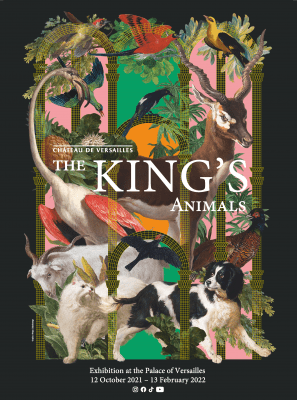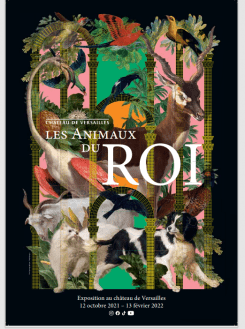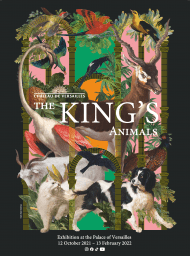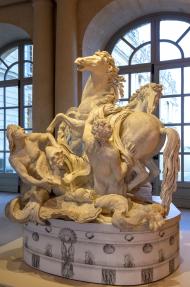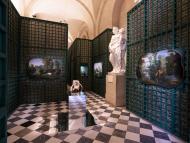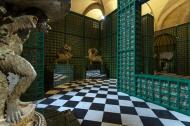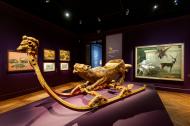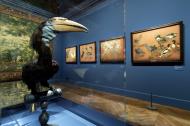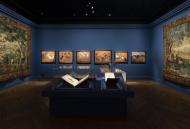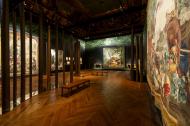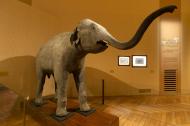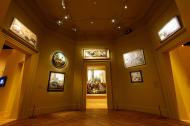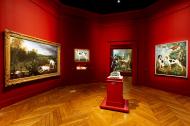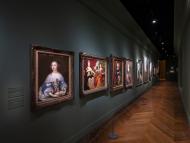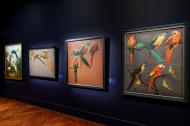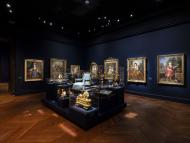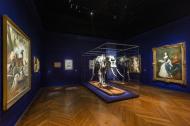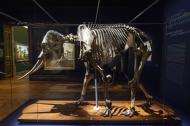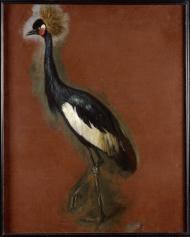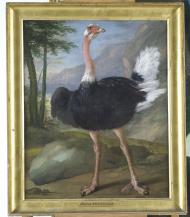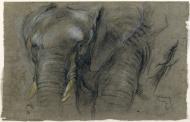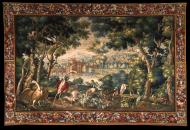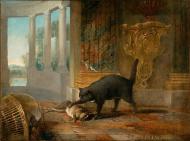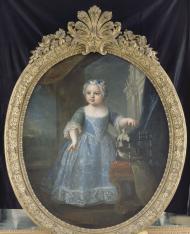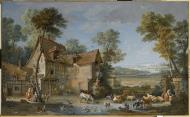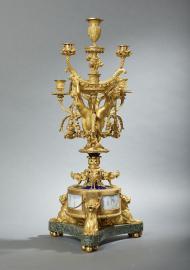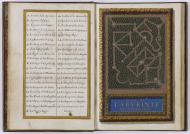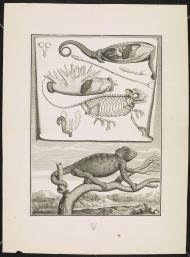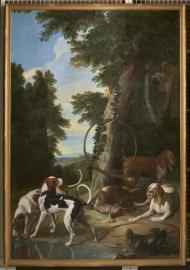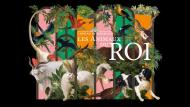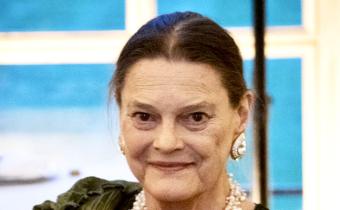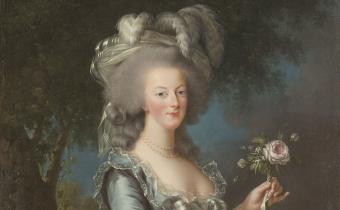The Exhibition
Looking at the Palace and Gardens of Versailles today, we can hardly imagine them awash in animal life. And yet the Palace was once home to dozens of companion animals, with dogs, monkeys, cats, birds and more occupying the apartments and antechambers. The now bygone Royal Menagerie featured the rarest species, from the coati to the quagga, and from beavers to black crowned cranes. Game was plentiful in the park, the royal stables accommodated 2,000 horses and the kennels held 300 hunting dogs. Animals are omnipresent as well in the decor of the Palace and Gardens, depicted for their mythological or political symbolism.
Since its creation, the Palace of Versailles contributed to establishing a new rapport with the animal world. Fierce resistance to the Cartesian theory of “animal machines” even emerged at court: in the Palace of the Kings of France, there was never any doubt that animals were endowed with a soul.
This legendary fauna is returning to Versailles for the exhibition The King’s Animals. Indeed, the King’s finest painters — Bernaerts , Boel , Le Brun , Desportes , Oudry — raised animals to noble standing through portraiture, alongside their paintings of Court worthies. Monarchs’ favourite dogs were also eligible for immortalisation on canvas, with their names gleaming in golden letters: visitors will thus make the acquaintance of Misse, Turlu, Tane, Blonde, Diane and other four-legged friends, not to mention Louis XV’s cat, Le Général, painted by Oudry.
Animals were also portrayed in tapestries woven at the Manufacture des Gobelins, and some were dissected and stuffed by taxidermists for the Academy of Science and the King's Garden. The public will also discover Louis XV’s stuffed elephant, as well as the skeleton of the first elephant to inhabit Versailles (a female given to Louis XIV by the King of Portugal).
Finally, the exhibition will look back on the Labyrinth Grove, adorned with a fantastic bestiary illustrating Aesop’s Fables. Never since the destruction of this mythical alcove of the Gardens of Versailles in 1774 have so many of the sculptures that once embellished it been presented to the public.
Paintings, sculptures, mounted animals, tapestries, sleds, vellums, porcelain, goldwork and more: some 300 works will be brought together for the exhibition, exemplifying the ubiquity of animals at Versailles. They are taken from some 50 collections in France and abroad (Louvre Museum, National Museum of Natural History, Musée de la Chasse et de la Nature, Galleria degli Uffizi in Florence, Sèvres Museum of Ceramics, Natural History Museum of the University of Pavia, etc.).
Exhibition curators
Alexandre Maral, General Curator at the Palace of Versailles in charge of sculptures and Director of the Palace of Versailles Research Centre.
Nicolas Milovanovic, Chief Curator at the Louvre Museum, in charge of 17th century French paintings.
Decor
Guicciardini&Magni Architetti
The exhibition is organised with special support from the Louvre Museum![]()

